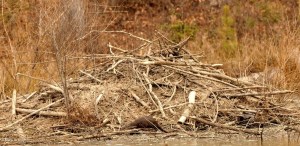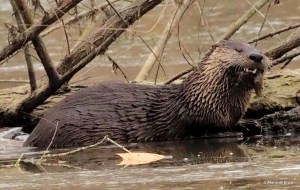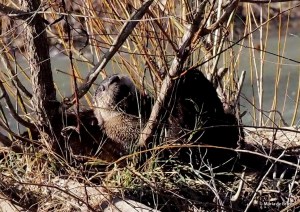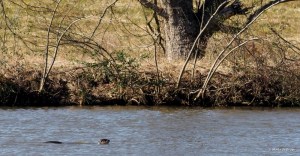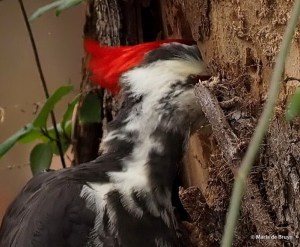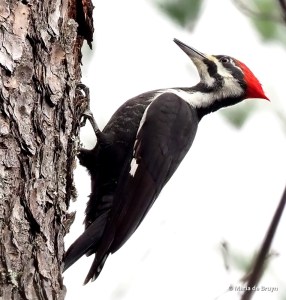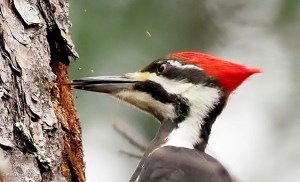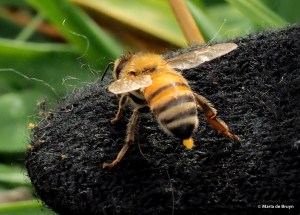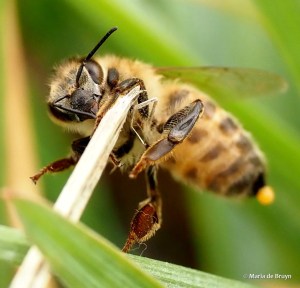I have always liked Eastern kingbirds and didn’t really understand why their scientific Latin name, Tyrannus tyrannus (e.g., tyrant), is so uncomplimentary. For me, they are among the loveliest and sweetest avians, and I love seeing and watching them.
Reading about the Eastern kingbirds informed me that their name is considered quite apt because they are known to harass birds that intrude into or pass over their nesting area. They drive away much bigger birds such as crows, hawks and herons.
When one of those nest predators comes near, the kingbird will do all it can to chase the predator away. During its sallies toward the intruder, the kingbird will raise its crown feathers, revealing some that are colored yellow, orange or red (similarly to a ruby-crowned kinglet). The bird will also open its beak wide showing a red gape and then dive-bomb the intruder which it sees as a threat.
The display of the kingbird’s “royal” crown is seldom seen. Last year, I hadn’t even realized that a kingbird I photographed trying to drive away a hawk was showing its yellow crown just a little bit (photo above). This year, I saw no confrontations between nesting kingbirds and any predators, so I got no “royal” views.
This past spring I did feel quite lucky, however, to have been alerted by a fellow birder to a kingbird nest that was out in the open next to a pond. I never came close to it as I didn’t want to alarm the birds. Having a longer lens on my camera (even though it was malfunctioning and a bit dicey to use) was definitely a boon — unlike most birders of my acquaintance, I don’t have binoculars, but I was still able to get fairly good looks.
Ms. Kingbird chose to situate her nest in a spot typically favored by her species, near the end of a horizontal tree branch. She had used twigs for the structure and we birders concluded that the light-colored fluffy material inside was sheep wool gathered from a flock that had grazed nearby.
Mother kingbird spent a lot of time incubating the eggs in her nest. Every time I visited, her mate was nearby keeping an eye on me and any other possible intruders. However, he must not have felt threatened during those visits as he never revealed that trademark bit of anatomy that led to these birds’ man-given name.
I learned that kingbirds are astute nesters. The female can recognize an egg that is not her own — for example, from a brown-headed cowbird — and she will eject the egg that she did not lay!
It turned out this kingbird had laid two eggs. Just after hatching, we still couldn’t see the babies. They stayed far down in the nest, and mom ducked her head inside to feed them. Finally, they got a bit bigger, and we could see little heads pop up when the parents arrived with food.
In the spring and summer, the kingbirds eat insects and are fun to watch as they swoop over vegetation to snatch up meals. It is rare to see them drinking water as they rely on their meals to provide any moisture they need. (They travel south to the Amazon region for the winter, spend their time in flocks during that season and then mainly eat fruit.)
 I was lucky to arrive one day just after the two babies had fledged. They stayed on branches right by the nest. One bird had gone up a bit higher while the more active sibling remained below near the nest.
I was lucky to arrive one day just after the two babies had fledged. They stayed on branches right by the nest. One bird had gone up a bit higher while the more active sibling remained below near the nest.
The two fledglings gaped wide to encourage their parents to give food.
For one of them, it was quite a wait to get a meal. If the parent feeds an insect with a stinger, this will often be removed and the insect killed before delivery.
The parent will watch as the young one gulps down the meal, especially if it is a rather large portion.
In between feedings, the fledgling on the higher branch sat still most of the time while I watched. Its sibling down lower was highly active. Preening was done thoroughly.
This was followed by flexing of wing muscles in preparation for first flight.
The exercise was vigorous — and then success — a tiny leap to a branch just above!
The fledgling looked quite pleased with its achievement.
 Kingbird parents continue feeding their young for about seven weeks. This lengthy parental care period means that they generally only have one brood each nesting season.
Kingbird parents continue feeding their young for about seven weeks. This lengthy parental care period means that they generally only have one brood each nesting season.
If Eastern kingbirds return next year to this same area, we may see the same pair. This species tends to produce more males than females (I found no explanation as to why) and females may therefore mate with more than one male. However, males and females tend to remain faithful pairs for raising broods (i.e., they are socially monogamous).
 As is the case for other bird species, there is now a decline in the number of Eastern kingbirds. Contributory factors include habitat loss (human development and changing agricultural practices), pesticide use destroying their food sources, and ingested pesticides leading to egg and nestling mortality when the poisons accumulate in parental bodies.
As is the case for other bird species, there is now a decline in the number of Eastern kingbirds. Contributory factors include habitat loss (human development and changing agricultural practices), pesticide use destroying their food sources, and ingested pesticides leading to egg and nestling mortality when the poisons accumulate in parental bodies.
Despite currently declining financial assistance in protecting habitats for wildlife, I really hope that next year I’ll again have the opportunity to see the lovely kingbirds again.




































